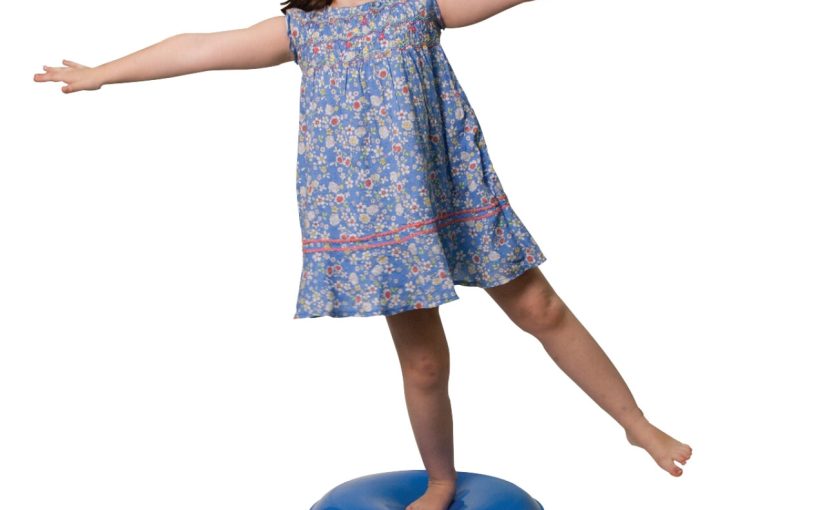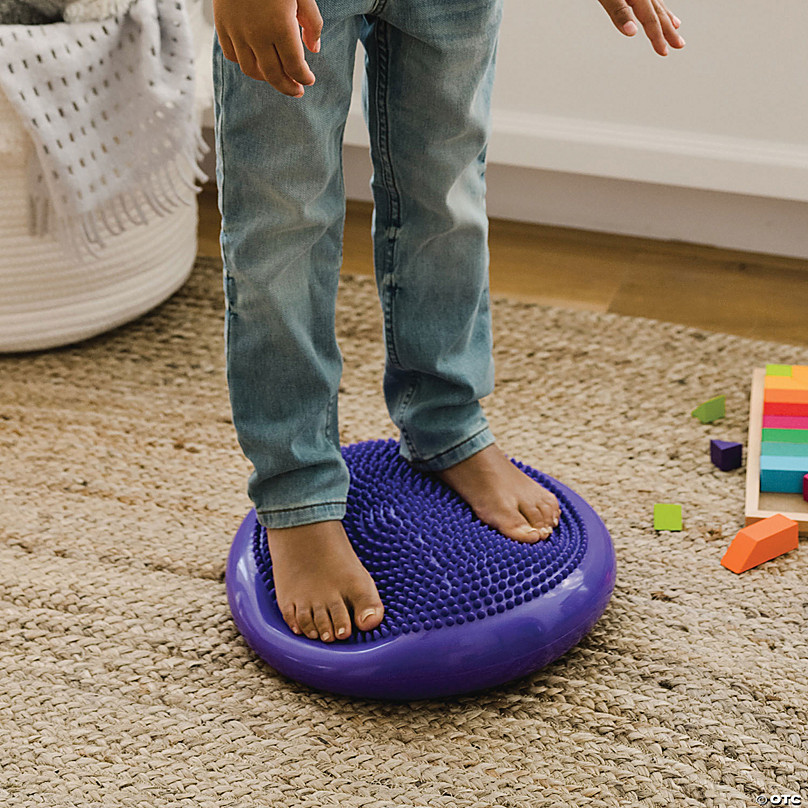What Are Wobble Sensory Balls?
The wobble sensory ball is unique, versatile toys designed for children’s playtime. These balls, created with soft, flexible material, can wobble and move unpredictably when touched. This unusual movement captures the attention of children, making them a fascinating plaything. The texture of the surface usually features bumps and ridges, enhancing tactile feedback. As children interact with these balls, they experience a variety of sensory stimuli. This engagement not only entertains the child but also supports crucial developmental stages. Wobble sensory ball comes in different sizes and colors to cater to various age groups and preferences. They are ideal for indoor and outdoor play, easy to clean, and often used in therapeutic settings to aid in motor skills development.
The Role of Sensory Play in Child Development
Sensory play is essential for child growth and learning. It involves activities that stimulate a child’s senses: touch, smell, taste, sight, and hearing. Sensory experiences provided by play materials, like wobble sensory balls, enhance brain development. They help build nerve connections in the brain’s pathways. These connections are critical for children to complete complex learning tasks.
Through sensory play with wobble sensory balls, children develop and improve their memory, cognitive growth, and learning skills. This form of play is not just about exploring and ‘having fun’—it is crucial for developing verbal and non-verbal communication. Sensory play supports children in expressing themselves and meeting developmental milestones.
Moreover, engaging with sensory-rich objects like wobble sensory balls enables children to process sensory information more effectively. This leads to better decision making and problem-solving skills from a young age. Thus, integrating sensory play into daily routines should be a priority for educators and parents aiming to foster robust developmental growth.
Benefits of Wobble Sensory Balls for Toddlers and Preschoolers
Wobble sensory balls offer numerous advantages for the youngest players. For toddlers and preschoolers, these benefits are particularly impactful as their senses and motor skills are in crucial developmental stages. Here are some of the key benefits:
- Enhanced Fine Motor Skills: Handling the irregular shapes and surfaces of wobble sensory balls helps children improve their grasp and finger coordination.
- Gross Motor Development: Chasing after the unpredictable movements of these balls encourages running, jumping, and balancing, aiding in overall physical growth.
- Sensory Integration: The unique textures of wobble sensory balls stimulate touch receptors, which is essential for sensory processing.
- Visual Tracking Improvement: Watching the wobble ball’s movements strengthens eye muscles and enhances visual follow-through skills.
- Social Skills and Cooperation: Playing with others using wobble sensory balls can improve sharing, turn-taking, and collaborative play.
- Language Development: Discussing the sensory experiences provides opportunities for vocabulary expansion and language skills.
- Emotional Regulation: Engaging with a sensory toy like the wobble ball can be calming and help toddlers manage sensory overload, leading to better emotional control.
By incorporating wobble sensory balls into playtime, parents and educators can foster an environment where toddlers and preschoolers can thrive both physically and mentally. These balls serve as a tool to prepare them for future learning and exploration.
How Wobble Sensory Balls Promote Motor Skills
Motor skill development is crucial for children, and wobble sensory balls play a pivotal role in this aspect. The unpredictable wobbling motion requires children to use different muscles and coordination techniques to catch, throw, or roll the ball, enhancing their fine and gross motor skills. These fun but challenging movements encourage kids to stretch their abilities and foster muscle control and balance improvement.
Here are specific ways in which wobble sensory balls aid in developing motor skills among young children:
- Improves Hand-Eye Coordination: Attempting to grasp or track the wobble sensory ball helps children refine their hand-eye coordination, which is vital for many daily tasks.
- Stimulates Muscle Development: The effort to control the ball’s irregular movements engages different muscle groups, contributing to overall muscle tone and strength.
- Promotes Balance and Posture: Navigating the wobble ball’s trajectory can improve a child’s balance and posture, skills that are important for all physical activities.
- Encourages Bilateral Coordination: Using both hands to manage the ball teaches children how to coordinate both sides of their body, a skill necessary for tasks such as tying shoes and writing.
Regular interaction with wobble sensory balls is not only entertaining for children but also instrumental in building a foundation for physical abilities. By playing with these sensory toys, children can naturally and effectively progress in their motor skills development.
Cognitive Advancements Through Wobble Ball Activities
Wobble sensory balls significantly impact cognitive development in children. These toys stimulate brain function through engaging, purposeful play. Children’s interactions with these balls go beyond mere entertainment; they enhance critical thinking and problem-solving skills.
Here are several cognitive benefits that children gain from playing with wobble sensory balls:
- Enhanced Concentration: The unpredictable nature of wobble balls keeps children focused. They learn to anticipate and react, which improves their attention span.
- Problem Solving Skills: Figuring out how to catch or roll the wobble sensory ball fosters creative solutions. This practice sharpens their ability to solve various problems.
- Memory Boost: Regular play with sensory balls helps improve memory. Kids remember specific movements and outcomes, which boosts memory recall.
- Spatial Awareness: Navigating the space around the moving ball teaches children spatial relationships. This enhances how they perceive and interact with their environment.
- Increased Curiosity and Exploration: The intriguing movement of wobble balls sparks curiosity. Children explore more, ask questions, and learn through discovery.
Through these activities, wobble sensory balls offer a dynamic way to support cognitive development in young minds. They encourage children to use thinking skills in a playful and enjoyable manner. Parents and educators should integrate these useful tools into regular playtime to maximize developmental benefits.
Integrating Wobble Sensory Balls into Daily Play Routines
Incorporating wobble sensory balls into daily playtime is straightforward and highly beneficial. To ensure young children get the most from these sensory toys, follow these simple strategies:
- Set Up a Safe Play Area: Choose a space that’s free from sharp objects and has plenty of room for movement.
- Create a Routine: Include wobble ball activities in your child’s daily schedule. It could be a specific time for play each day.
- Engage with Your Child: Join in the play to encourage interaction and demonstrate different ways to use the ball.
- Vary the Activities: Keep play interesting by suggesting new games, like rolling the ball with different body parts or playing catch.
- Encourage Exploration: Allow your child to use the wobble sensory ball freely. This fosters creativity and independent play.
- Invite Peers to Play: Playing with others helps with social skills. Have play dates where children can play with wobble sensory balls together.
- Use as a Teaching Tool: Teach colors, numbers, and action words during play. For example, ‘Roll the red ball fast’ or ‘Bounce the ball three times’.
- Maintain a Positive Environment: Offer praise and encouragement. This positive reinforcement will make playtime with wobble sensory balls even more engaging.
Adapting these methods into regular play can be effective in delivering the sensory and developmental benefits of wobble sensory balls. They’ll become an essential part of your child’s growth and enjoyment.
Selecting the Right Wobble Sensory Ball for Your Child
Choosing the right wobble sensory ball is key to maximizing developmental benefits. Here are some tips to help you select the appropriate ball for your child:
- Consider Age and Size: Wobble balls come in various sizes. Pick one that matches your child’s age and hand size.
- Look at Texture: Balls with different textures offer various sensory experiences. Find one that will be most appealing to your child.
- Check Durability: Ensure the ball is made from durable, non-toxic materials that can withstand frequent use.
- Bright Colors: Opt for balls with vibrant colors. They can aid in visual development and are more engaging for children.
- Variety in Movement: Some balls wobble differently. Choose a ball with a movement that will challenge your child appropriately.
- Ease of Cleaning: Look for balls that are easy to clean, especially since they will be used frequently and in different environments.
Picking the correct wobble sensory ball involves considering your child’s developmental needs and preferences. Take the time to find a ball that is safe, engaging, and beneficial to ensure the best sensory play experience possible.
Safety Tips and Best Practices When Using Sensory Balls
Ensuring safety during play is critical, especially with younger children. Sensory balls, like wobble sensory balls, are mostly safe, yet some precautions are necessary. Here are some safety tips and best practices for using wobble sensory balls:
- Supervise Playtime: Always watch children as they play. Active supervision prevents accidents.
- Inspect the Ball Regularly: Check the wobble sensory ball for tears or damage. Replace if needed to avoid choking hazards.
- Avoid Hard Surfaces: Use the balls on soft surfaces to minimize injury if falls occur.
- Teach Proper Use: Explain how to play safely. Discourage throwing the ball at others or using it improperly.
- Clean Regularly: Keep the ball clean. This reduces the risk of germs, especially when used by multiple children.
- Limit Playtime: Too much sensory stimulation can overwhelm a child. Give breaks during play.
- Use Age-Appropriate Balls: Ensure the ball is suitable for your child’s age group to prevent misuse.
- Check for Allergens: Be aware of any materials that may cause allergic reactions in your child.
- Store Safely: Keep the ball in a safe place where it can’t pose a tripping risk or attract unwanted pests.
By following these tips, you can provide a safe and beneficial play experience with the wobble sensory ball for your child. Safety should always come first in any play activity.



